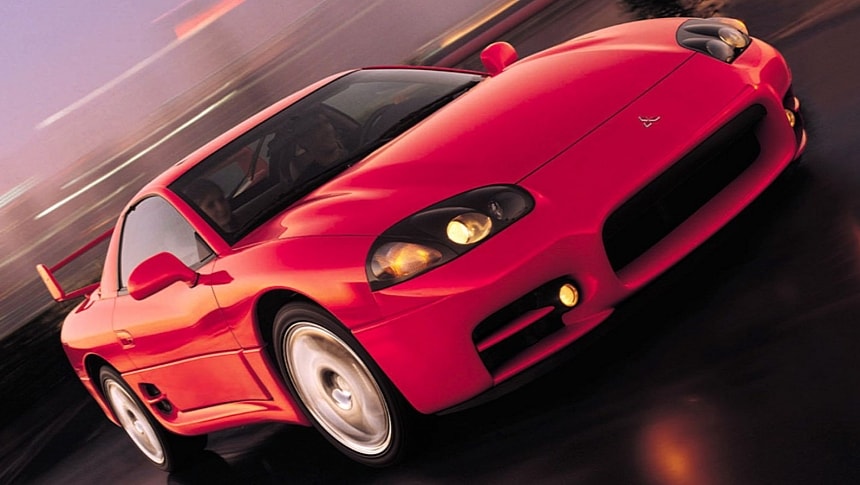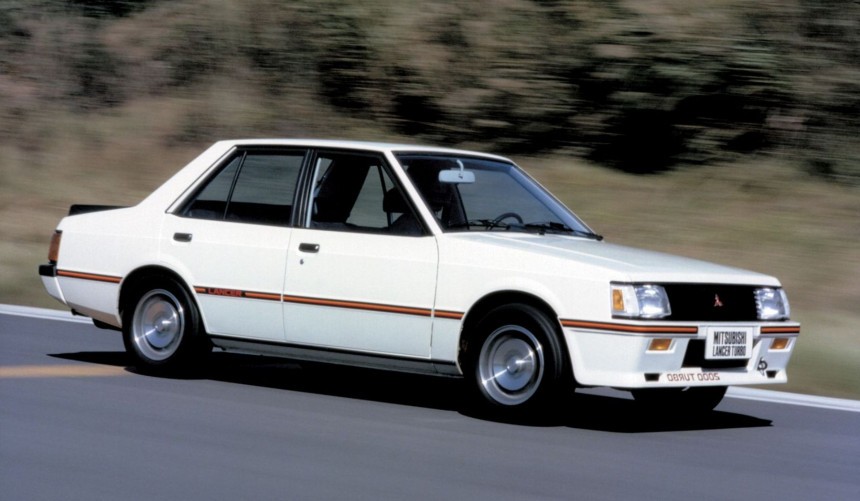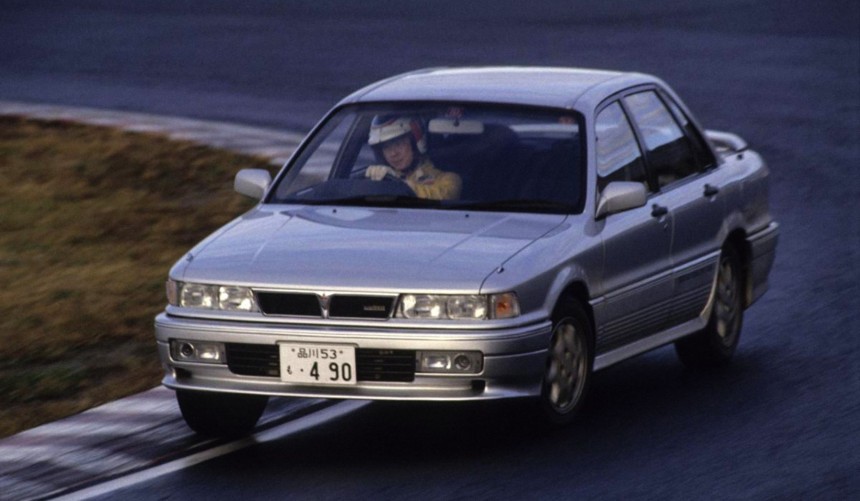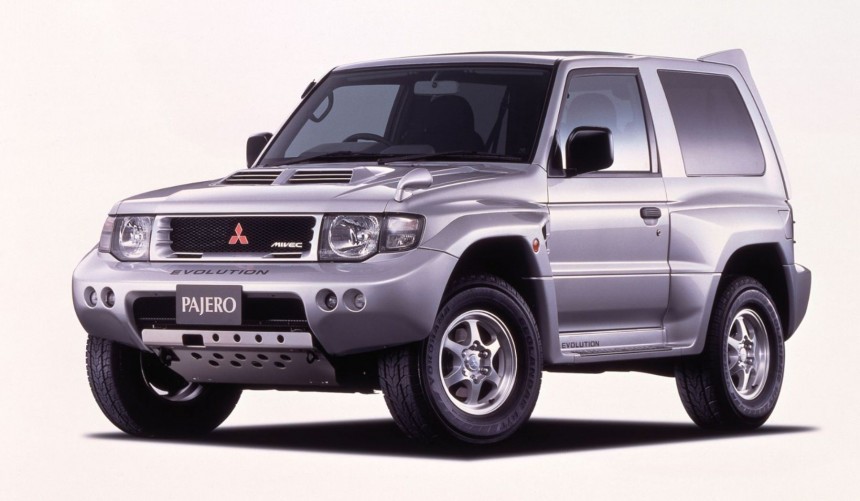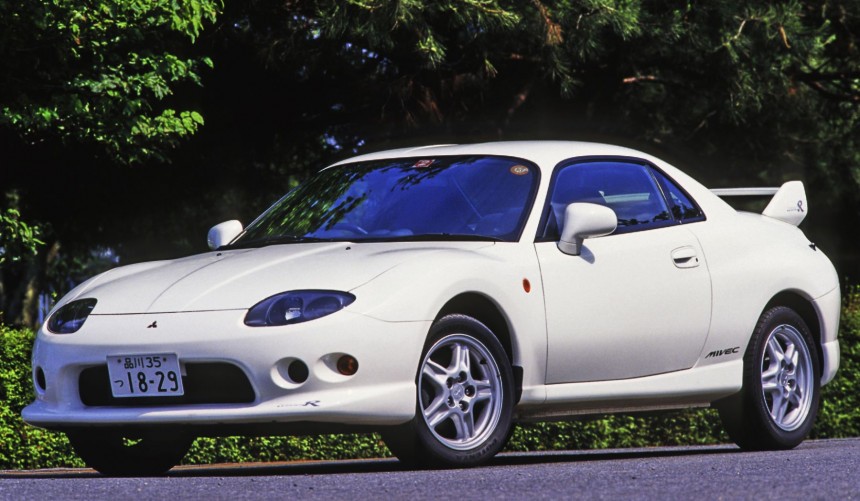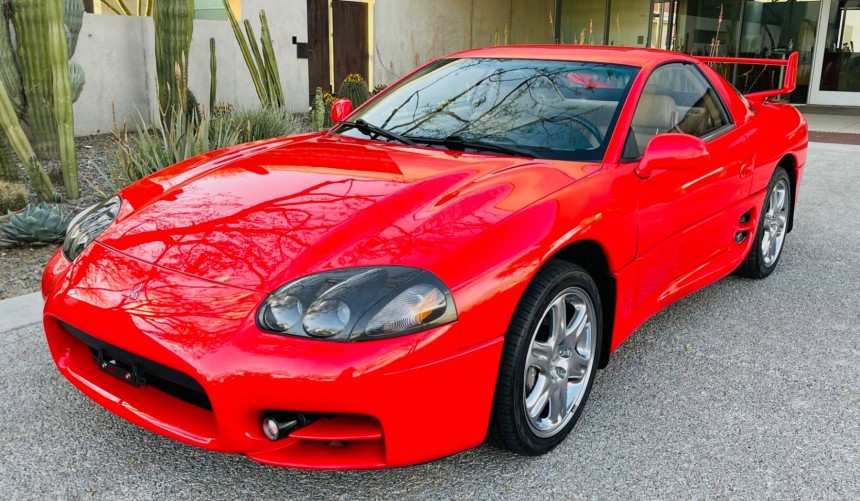When you put together "Mitsubishi" and "performance" in the same sentence, the word "Evo" usually follows. But while there's no denying that the rally-bred, Lancer-based Evolution is the Japanese carmaker's most iconic performance series, it wasn't its only great performance model.
Mitsubishi was established in 1870 as a shipping company, and a century later, it became one of Japan's largest corporations, with branches in shipbuilding, automotive, aircraft, and banking industries.
Although it developed the country's first series-production automobile in 1917, it took another sixty years for Mitsubishi to establish itself as a leading Japanese carmaker.
Today, its vehicle lineup is dominated by arguably boring SUVs, but during the 1980s, 1990s, and early 2000s, Mitsubishi was heavily involved in motorsport and produced a series of awesome performance vehicles.
Of course, its most famous model remains, the Lancer-based Evolution, produced over ten distinct generations, most of which were street-legal homologation versions of epic rally cars.
Apart from the Evos, the Japanese carmaker developed many interesting performance models, and in this article, we'll remember our five favorite ones.
Mitsubishi's involvement in the world of rallying predates the Lancer-based Evolution models by a couple of decades.
In 1979, after a three-year hiatus, the Japanese carmaker decided to return to rallying, aiming for a Group 4 title.
To achieve it, they devised a new Lancer-based rally car, and for homologation purposes, a street version was also born.
Unveiled at the 1979 Tokyo Motor Show, the homologation special was named Lancer EX 2000 Turbo.
Save for some minor exterior upgrades, the 2000 Turbo looked much like a normal Lancer sedan, but under the hood, things were a lot more exciting.
Powered by the standard Lancer's two-valve-per-cylinder SOHC 4G63 inline-four beefed-up with an intercooled turbo, an electronic fuel injection system, and a programmable ECU, the EX 2000 Turbo had 168 hp on tap - more than twice as much as a naturally-aspirated 4G63-powered Lancer.
Produced from 1981 to 87, The EX 2000 Turbo didn't bring Mitsubishi a WRC title, but it laid the groundwork for what became the Lancer Evolution program.
The 2000 Turbo couldn't stand a chance in the WRC against the rising 4WD trend pioneered by the Audi Quattro. Therefore, after retiring the Turbo, the Japanese manufacturer introduced a 4WD Starion that wasn't particularly successful.
The lessons learned from the 4WD Starion translated into a new program that gave birth to the 1987 Galant VR-4.
Equipped with a completely new full-time 4WD system, four-wheel steering, a high-tech ABS system, and a fully independent suspension, the latest homologation special became one of the most advanced performance sedans of the 1980s.
It was powered by a 2.0-liter DOHC turbocharged version of the venerable 4G63 straight-four that made between 202 and 237 hp (depending on the model year).
The Galant VR-4 was the direct predecessor of the first Lancer Evolution, which replaced it as Mitsubishi's WRC weapon in 1992.
Two additional Galant VR-4s followed, including the spectacular V6-twin-turbo-powered 1996–2002 model that shared much hardware with the Evo IV, but we chose the original Galant for this article because of its impact on Mitsubishi's rally and street-legal performance programs.
Apart from the WRC, Mitsubishi was heavily involved in rally raids, becoming the manufacturer to beat in the most famous rally raid of all: the Dakar rally.
With three overall Dakar victories to its name, the Japanese company decided that for 1997, the best way to stay on top was to enter the production-based T2 class.
Unable to compete with its heavily modified Pajeros in this class, Mitsubishi had to develop a street-legal homologation special that became a high-performance SUV years before SUVs became cool.
Fittingly dubbed Evolution, the homologation special was based on the two-door second-generation Pajero (aka Montero or Shogun), but featured a number of dramatic exterior, chassis, and drivetrain upgrades.
The bespoke hardware included a 4WD system with Torsen differentials front and rear, as well as a 275-hp 3.5-liter DOHC V6 with MIVEC (variable timing) and a dual plenum variable intake.
The badass-looking Pajero Evolution was produced between 1997 and 1999 in 2,693 units.
In 1994, Mitsubishi launched its take on the popular compact sports car market. Dubbed FTO, the model's highlighting features were a front-mid-mounted engine and four-wheel-drive.
A reasonably successful sports car, especially in Japan, where it was named Car of the Year in 1994, the FTO was continually developed throughout the years.
In 1997, a facelifted version was introduced, and with it came the most performance-focused FTO: the GP Version R.
Powered by the same 197-hp DOHC 24-valve MIVEC V6 as the more conventional GPX, the Version R featured distinctive exterior and interior upgrades, a revamped suspension, and a standard limited-slip differential.
The model also received a weight-saving treatment by removing the side skirts, front fog lights, climate control system, electric folding mirrors, and soundproofing.
The Version R was produced until 2000, receiving slight modifications, as well as an Aero package that improved aerodynamics.
Introduced in 1990, the 3000GT (or GTO, in Japan) was Mitsubishi's flagship GT-style sports car for the next decade.
It was produced in three series and featured a number of distinct versions, the rarest and coolest of which was the US-only VR-4.
The original VR-4 was launched with all other 3000GT variants in 1990, but the most powerful, stylish, and advanced version came nine years later.
The last salvo for the VR-4, the facelifted Series 3, was easy to differentiate from the rest of the 3000GTs thanks to its huge inverted airfoil spoiler dubbed "the Combat Wing."
The model was equipped with the Viscous Realtime 4WD system and a DOHC 24-valve twin-turbo V6 rated at 320 hp that enabled it to run the quarter mile in 13.44 seconds quarter mile at 101.7 mph (163.7 kph), according to a test conducted by Popular Mechanics magazine in 2001.
Due to poor sales, Mitsubishi discontinued the 3000GT after the 2000 model year. Consequently, just 287 Series 3 VR-4s were produced.
Although it developed the country's first series-production automobile in 1917, it took another sixty years for Mitsubishi to establish itself as a leading Japanese carmaker.
Today, its vehicle lineup is dominated by arguably boring SUVs, but during the 1980s, 1990s, and early 2000s, Mitsubishi was heavily involved in motorsport and produced a series of awesome performance vehicles.
Of course, its most famous model remains, the Lancer-based Evolution, produced over ten distinct generations, most of which were street-legal homologation versions of epic rally cars.
Apart from the Evos, the Japanese carmaker developed many interesting performance models, and in this article, we'll remember our five favorite ones.
1980-1981 Mitsubishi Lancer EX 2000 Turbo
In 1979, after a three-year hiatus, the Japanese carmaker decided to return to rallying, aiming for a Group 4 title.
To achieve it, they devised a new Lancer-based rally car, and for homologation purposes, a street version was also born.
Unveiled at the 1979 Tokyo Motor Show, the homologation special was named Lancer EX 2000 Turbo.
Save for some minor exterior upgrades, the 2000 Turbo looked much like a normal Lancer sedan, but under the hood, things were a lot more exciting.
Powered by the standard Lancer's two-valve-per-cylinder SOHC 4G63 inline-four beefed-up with an intercooled turbo, an electronic fuel injection system, and a programmable ECU, the EX 2000 Turbo had 168 hp on tap - more than twice as much as a naturally-aspirated 4G63-powered Lancer.
Produced from 1981 to 87, The EX 2000 Turbo didn't bring Mitsubishi a WRC title, but it laid the groundwork for what became the Lancer Evolution program.
1989–1992 Mitsubishi Galant VR-4
The lessons learned from the 4WD Starion translated into a new program that gave birth to the 1987 Galant VR-4.
Equipped with a completely new full-time 4WD system, four-wheel steering, a high-tech ABS system, and a fully independent suspension, the latest homologation special became one of the most advanced performance sedans of the 1980s.
It was powered by a 2.0-liter DOHC turbocharged version of the venerable 4G63 straight-four that made between 202 and 237 hp (depending on the model year).
The Galant VR-4 was the direct predecessor of the first Lancer Evolution, which replaced it as Mitsubishi's WRC weapon in 1992.
Two additional Galant VR-4s followed, including the spectacular V6-twin-turbo-powered 1996–2002 model that shared much hardware with the Evo IV, but we chose the original Galant for this article because of its impact on Mitsubishi's rally and street-legal performance programs.
1997-1999 Mitsubishi Pajero Evolution
With three overall Dakar victories to its name, the Japanese company decided that for 1997, the best way to stay on top was to enter the production-based T2 class.
Unable to compete with its heavily modified Pajeros in this class, Mitsubishi had to develop a street-legal homologation special that became a high-performance SUV years before SUVs became cool.
Fittingly dubbed Evolution, the homologation special was based on the two-door second-generation Pajero (aka Montero or Shogun), but featured a number of dramatic exterior, chassis, and drivetrain upgrades.
The bespoke hardware included a 4WD system with Torsen differentials front and rear, as well as a 275-hp 3.5-liter DOHC V6 with MIVEC (variable timing) and a dual plenum variable intake.
The badass-looking Pajero Evolution was produced between 1997 and 1999 in 2,693 units.
1997-2000 Mitsubishi FTO GP Version R
A reasonably successful sports car, especially in Japan, where it was named Car of the Year in 1994, the FTO was continually developed throughout the years.
In 1997, a facelifted version was introduced, and with it came the most performance-focused FTO: the GP Version R.
Powered by the same 197-hp DOHC 24-valve MIVEC V6 as the more conventional GPX, the Version R featured distinctive exterior and interior upgrades, a revamped suspension, and a standard limited-slip differential.
The model also received a weight-saving treatment by removing the side skirts, front fog lights, climate control system, electric folding mirrors, and soundproofing.
The Version R was produced until 2000, receiving slight modifications, as well as an Aero package that improved aerodynamics.
1999 Mitsubishi 3000GT VR-4
It was produced in three series and featured a number of distinct versions, the rarest and coolest of which was the US-only VR-4.
The original VR-4 was launched with all other 3000GT variants in 1990, but the most powerful, stylish, and advanced version came nine years later.
The last salvo for the VR-4, the facelifted Series 3, was easy to differentiate from the rest of the 3000GTs thanks to its huge inverted airfoil spoiler dubbed "the Combat Wing."
The model was equipped with the Viscous Realtime 4WD system and a DOHC 24-valve twin-turbo V6 rated at 320 hp that enabled it to run the quarter mile in 13.44 seconds quarter mile at 101.7 mph (163.7 kph), according to a test conducted by Popular Mechanics magazine in 2001.
Due to poor sales, Mitsubishi discontinued the 3000GT after the 2000 model year. Consequently, just 287 Series 3 VR-4s were produced.
